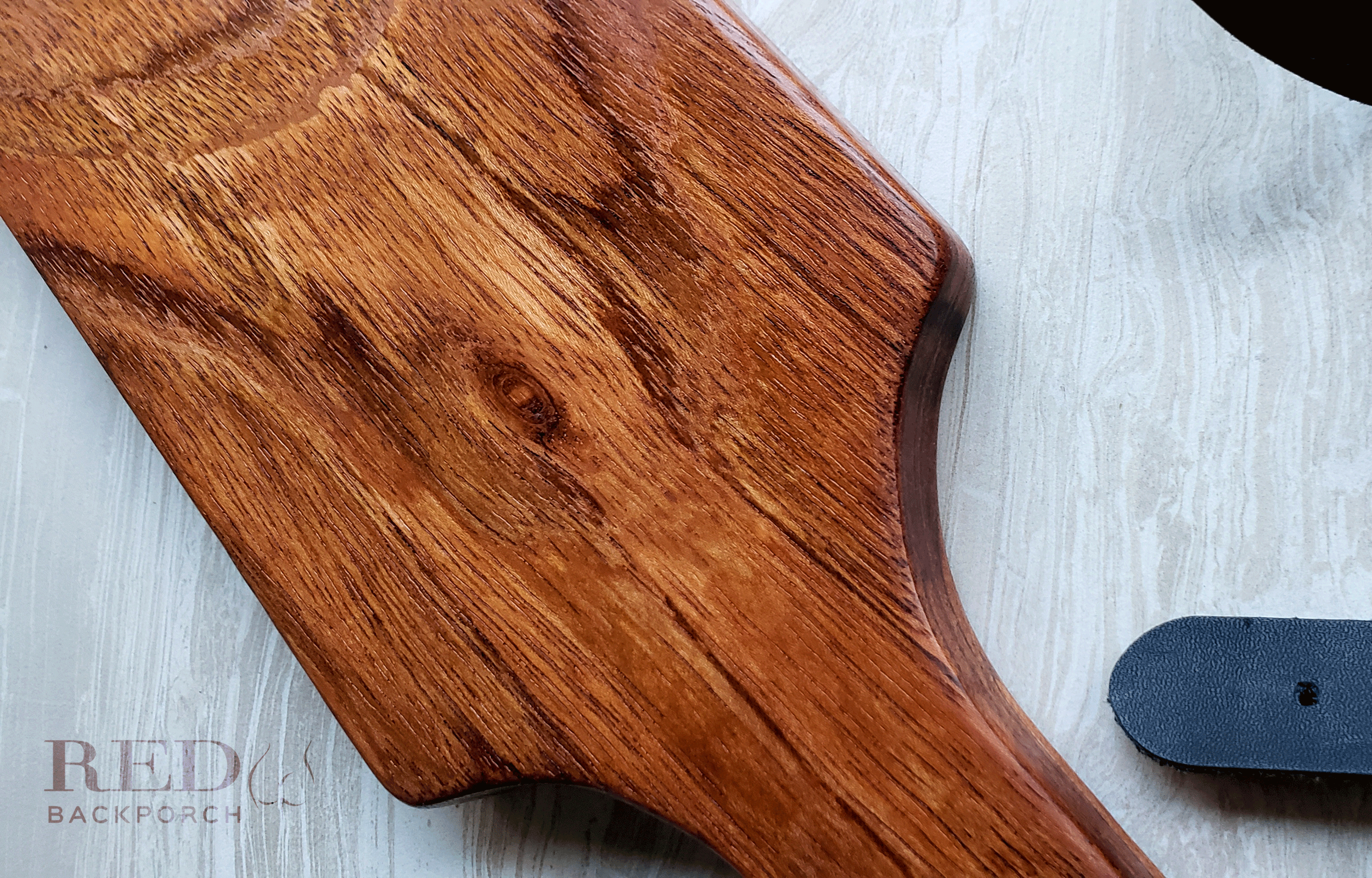Anatomy of a Paddle
All the Pretty Pieces
Anatomy of the Lambaster spanking paddle in black walnut with holes
There are oodles of paddles out there: wood, leather, acrylic, solid, thuddy, holed and stingy. Some paddles are meant for pain, some for intimidation. Others are created for pure delight and funishment.
No matter the intention, design, or material, spanking paddles have an unmistakable structure to them.
They’ve all got a place to grab and a place to smack.
Get a Grip
Call it a grip or a handle, the portion of the paddle you wrap your grubby little fingers around needs to feel comfortable. Handles that are too wide or too narrow for your grasp can be unwieldy to control and cause your grip to konk out prematurely. While there are two-handed paddles with longer handles, most paddles are for single-handed use.
Handles make good engraving sites for names, symbols, honorifics, or special messages.
Show Off
The little hole you see near end of some handles is a lanyard hole. A short length of twine or a thin strap of leather is tied on and used to hang the paddle for storage and/or display purposes.
That’s My Face, Sir
The striking part of the spanking paddle is called the blade. Blades come in all shapes and sizes and can be covered with different materials to produce unique sensations, i.e. a wooden paddle with a furry blade on one side and leather on the other. Typically the largest and most eye-catching part of the paddle, the blade can be a showcase for stunning natural grain patterns, engraving, artwork, and holes of different shapes and sizes.
Holes drilled in the blade reduce the air pressure built up during a swing, creating a more intense sensation for the bottom by causing the skin to compress and pinch at the site of impact. Care should be taken to bevel the holes to avoid breaking the skin unnecessarily.
Not a Shoulder to Lean On
Where the blade meets the handle is the shoulder of the paddle. This area isn’t typically used for striking, but more a transition from the blade to the handle. With a well-balanced paddle, choking up your grip a bit closer to the shoulder can give you more precise control with longer-handles. Alternatively, sliding your grip further away from the shoulder utilizes the full length of the handle, giving you potentially more power but with less precision.
A fair amount of pressure is exerted between the shoulders of the paddle with every strike, so this area needs to be structurally sound to avoid sudden breakage. Rounding the shoulders of the paddle provides extra support when it’s flexing under the pressure of a strike. Shoulders that are too squared off run the risk of breaking at the corner.
Just the Tip
The end of the blade is the tip. The tip isn’t prime real estate for impact but can be fun for lighter smacks and taps. Like holes, striking with the tip of the paddle compresses and pinches the skin so take care that the tip of the paddle doesn’t cause unnecessary damage or strike in unwanted places.
The striking zone of the typical paddle is smack dab in the center of the blade to avoid the tip and shoulders altogether.





